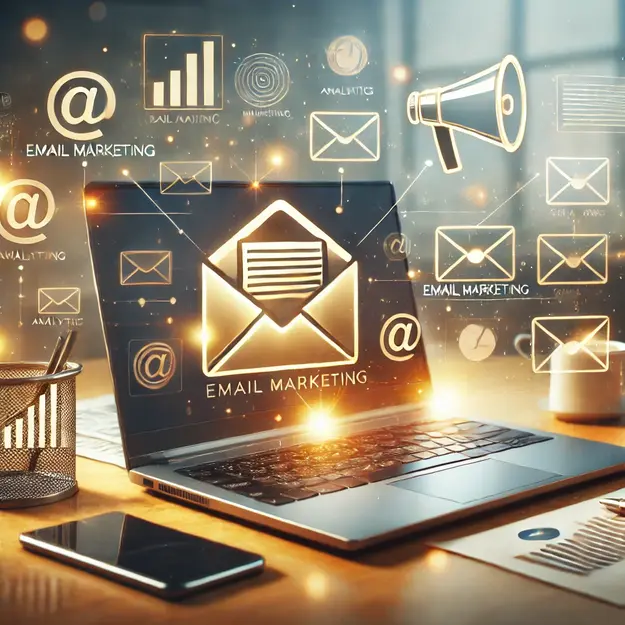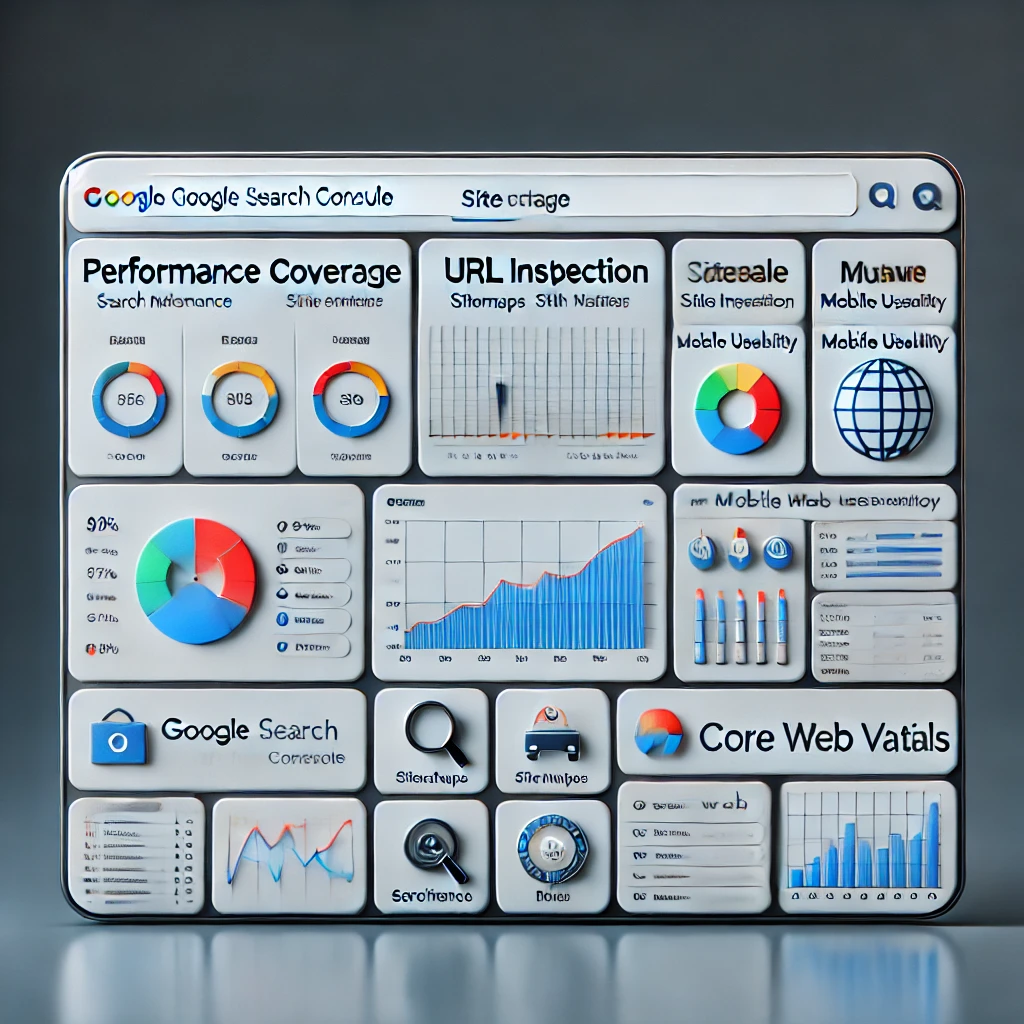A Beginner’s Guide to Successful Email Marketing Campaigns
Email marketing remains one of the most cost-effective and impactful ways to connect with your audience, generate leads, and boost conversions. With an average ROI of $36 for every $1 spent, it’s no wonder that email marketing is still a go-to strategy for businesses of all sizes. This guide will help beginners understand the essentials of creating and executing successful email marketing campaigns.
1. Understanding Email Marketing
Email marketing involves sending targeted emails to your subscribers to build relationships, promote products or services, and achieve business goals. Unlike social media, email marketing provides direct access to your audience’s inbox, making it a powerful tool for engagement and conversion.
Key Benefits of Email Marketing:
- Direct Communication: Emails go straight to the recipient’s inbox, making them highly personal.
- Cost-Effectiveness: Compared to paid ads, email marketing is affordable and offers a high ROI.
- Measurable Results: You can track open rates, click-through rates, and conversions to evaluate performance.
- Scalability: Whether you have 100 or 100,000 subscribers, email marketing scales seamlessly.
2. Setting Goals for Your Email Campaigns
Before you begin, define clear objectives for your email marketing efforts. Common goals include:
- Building Awareness: Introducing your brand to new audiences.
- Driving Traffic: Directing users to your website, blog, or landing page.
- Generating Leads: Encouraging sign-ups for newsletters, webinars, or free resources.
- Boosting Sales: Promoting offers, discounts, or product launches.
- Retaining Customers: Engaging existing customers with updates, tips, or loyalty rewards.
Having specific goals will help shape the content, design, and structure of your emails.
3. Building and Growing Your Email List
Your email list is the foundation of your campaigns. Focus on growing a quality list of engaged subscribers.
Strategies to Build Your List:
- Create Valuable Lead Magnets: Offer free resources like eBooks, guides, templates, or discounts in exchange for email addresses.
- Use Sign-Up Forms: Place user-friendly forms on your website, blog, and social media.
- Host Webinars or Events: Collect email addresses during registrations.
- Run Contests or Giveaways: Offer incentives for users to subscribe.
- Optimize Landing Pages: Ensure your landing pages are visually appealing and clearly communicate the benefits of subscribing.
Best Practices for List Building:
- Never buy email lists; they often include unengaged or invalid contacts.
- Use double opt-in methods to confirm subscribers genuinely want to join.
- Regularly clean your list to remove inactive subscribers and reduce bounce rates.
4. Crafting Effective Emails
Creating emails that resonate with your audience is crucial for engagement and conversions. Here’s how to craft impactful emails:
Key Elements of an Email:
- Subject Line: This is the first thing recipients see. Make it concise, intriguing, and action-oriented.
- Example: “Unlock 50% Off Your Next Purchase!”
- Header: Use an eye-catching header to grab attention and introduce the email’s purpose.
- Body Content: Keep the message clear, concise, and relevant. Focus on solving a problem or providing value to the reader.
- Call-to-Action (CTA): Include a clear, clickable CTA that tells recipients what to do next (e.g., “Shop Now,” “Learn More”).
- Footer: Add essential details like your business’s contact information, unsubscribe link, and social media profiles.
Writing Tips:
- Personalize your emails with the recipient’s name and tailored content.
- Use a conversational tone to build rapport.
- Highlight benefits, not just features.
- Incorporate visuals like images, GIFs, or videos to make your emails visually appealing.
- Optimize for mobile devices, as 85% of users check emails on their phones.
5. Designing Emails That Stand Out
A well-designed email enhances readability and engagement. Follow these design tips:
- Use a clean layout with plenty of white space.
- Choose a font size and style that’s easy to read.
- Stick to a consistent color scheme that matches your brand.
- Include your logo and maintain brand identity.
- Test your design on different email clients (e.g., Gmail, Outlook) to ensure compatibility.
6. Segmenting Your Audience
Segmentation involves dividing your email list into smaller groups based on specific criteria. This allows you to send more targeted and relevant messages.
Common Segmentation Criteria:
- Demographics: Age, gender, location.
- Behavior: Purchase history, website activity, email engagement.
- Preferences: Product interests, communication preferences.
Benefits of Segmentation:
- Higher open and click-through rates.
- Improved customer satisfaction.
- Increased conversions and revenue.
7. Automating Email Campaigns
Automation helps you deliver timely and personalized emails without manual effort. Common automated campaigns include:
- Welcome Emails: Sent immediately after a user subscribes.
- Abandoned Cart Emails: Remind users to complete their purchase.
- Follow-Up Emails: Nurture leads with a series of educational or promotional emails.
- Birthday or Anniversary Emails: Celebrate special occasions with personalized offers.
Use email marketing tools like Mailchimp, HubSpot, or ConvertKit to set up and manage automation workflows.
8. Measuring and Optimizing Performance
Tracking metrics is essential for evaluating the success of your campaigns and identifying areas for improvement.
Key Metrics to Monitor:
- Open Rate: Percentage of recipients who opened your email.
- Click-Through Rate (CTR): Percentage of recipients who clicked on a link.
- Conversion Rate: Percentage of recipients who completed a desired action.
- Bounce Rate: Percentage of undeliverable emails.
- Unsubscribe Rate: Percentage of recipients who opted out.
Tips for Optimization:
- A/B test different subject lines, content, and CTAs.
- Analyze metrics to identify trends and improve future campaigns.
- Continuously refine your email content and design based on feedback and data.
9. Staying Compliant with Email Regulations
Ensure your campaigns comply with email marketing laws like the CAN-SPAM Act, GDPR, and CASL to avoid penalties and maintain credibility.
Compliance Checklist:
- Obtain explicit consent before sending emails.
- Include an easy-to-find unsubscribe link in every email.
- Clearly identify your business in the sender’s information.
- Avoid misleading subject lines or deceptive content.
10. Tools to Simplify Email Marketing
Investing in the right tools can streamline your email marketing efforts. Popular email marketing platforms include:
- Mailchimp: User-friendly and great for beginners.
- Constant Contact: Excellent for small businesses.
- HubSpot: Advanced features for automation and CRM integration.
- ConvertKit: Ideal for creators and bloggers.
- ActiveCampaign: Offers robust automation and segmentation options.
Conclusion
Email marketing is a powerful channel for building relationships, driving engagement, and achieving business goals. By following the strategies outlined in this guide—from building your list to crafting compelling content and measuring performance—you can create successful campaigns that deliver results. Start small, learn from your data, and continuously optimize to refine your approach. With consistency and effort, email marketing can become one of your most valuable tools for growth.












